Works
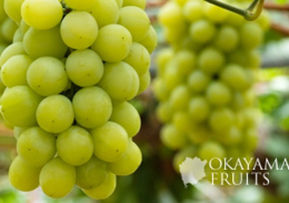
Muscat of Alexandria
(マスカット オブ アレキサンドリア)
Muscat of Alexandria is a premium type of grape representing Okayama. It used to be grown in glass greenhouse and there are still many people who like this grape due to its noble flavor and refined sweetness. It is not only enjoyed fresh, but also as wine and the filling of sweets.
Season: Late May (greenhouse) to early November (outdoors)
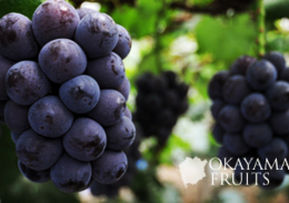
New Pione Grapes
(ニューピオーネ)
They are very juicy with rich flavor inside. We are sure that you will be satisfied with these grapes as you can feel satisfaction of “eating tasty grapes.” The skins of new pione grapes easily separate from fruits. Although they are black grapes, they have a rich and elegant flavor.
Season: Early May (greenhouse) to late October (outdoors in season)
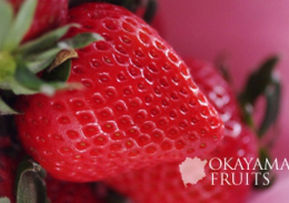
Strawberry
(イチゴ)
You can see strawberries everywhere in Japan. Okayama is one of the growing districts of quality strawberries. Large and sweet strawberries, including “Beni-Hoppe,” “Akihime,” “Saga-Honoka” and “Sachinoka,” are well-established and now many farmers are producing these strawberries more and more. Saidaiji and Kumenan districts are famous for these strawberries.
Season: Early December to late May
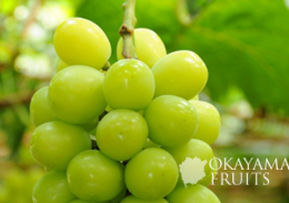
Shine Muscat
(シャインマスカット)
These large grapes can be eaten without removing skin or seeds. This is a new breed of muscat with a fresh and delicate flavor. Their sugar degree is up to 20 and the grapes do not have such a strong bitter taste. You will be satisfied with them as they have very typical taste of grapes. Shine Muscats produced in Okayama are famous for their consistent quality and beautiful appearance. It will be one of typical grape types representing Okayama.
Season: Early July to late October
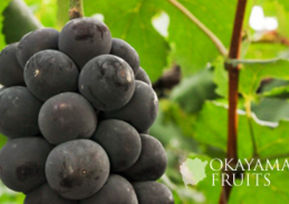
Aurora Black
(オーロラブラック)
This is a type of large grape with a rich flavor and strong sweetness that originated in Okayama. It is easy to eat as it has no seeds and the skin comes off easily. Aurora Black is becoming more and more popular as a grape for the next generation. It has a typical flavor which is a little different from similar black grapes such as Pione and Kyoho.
Season: Early May (greenhouse) to late October (outdoors)
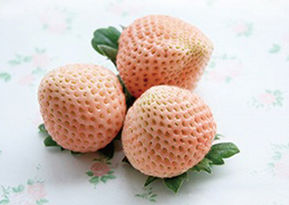
Tokun
(桃薫・とうくん)
Tokun strawberries have a flavor similar to peaches or coconuts. The flavor includes many distinguishing elements such as sweet caramel, so you can enjoy a taste different from traditional strawberries. Its light color draws the attention of people, it is called a “white strawberry.” The strawberry is soft and its color inside is white. It is truly similar to the taste of a peach.
Season: Early January to late March
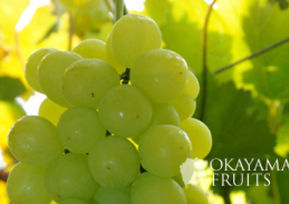
Seto Giants
(瀬戸ジャイアンツ)
Seto Giants are a green type of strawberry created in Okayama. You can eat them with the skin. They have a crispy feature and a sweet and fresh taste. Large grapes are made similar to peaches, thus you can recognize Seto Giants just at a glance. Steady bunches are heavy and they are popular as they taste like sophisticated grapes.
Seasons: Middle of July to late November
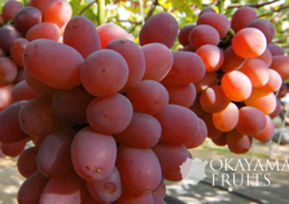
Shien
(紫苑・しえん)
Famous and popular grapes with beautiful color, reminding us of a noble red wine. Shien have a strong sweetness and crispy texture. They are produced later in the grape season compared to other grapes. It is a luxury winter grape and you will enjoy eating them in winter. They are popular among a wide variety of ages from children to the elderly as they have no seeds and the skin comes off easily. New red type grapes draw the attention of people.
Season: Late October to late December
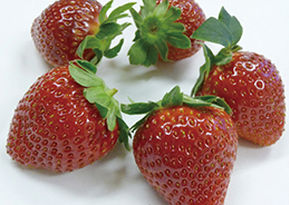
Oi-C-Berry
(おいCベリー)
The vitamin C content in this strawberry is the highest among the strawberries sold in the market. 1.3 times “Sachinoka” and approximately 1.6 times “Toyonoka.” 7 of these strawberries are equivalent to 100mg of vitamin C, which is the recommended amount necessary for 1 day. This strawberry is larger than “Toyonoka” and has a dark red shiny color. High sugar content, good taste and they keep well.
Season: Early January to late March
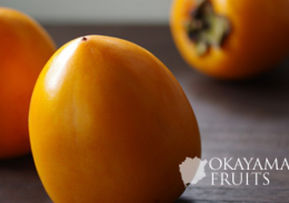
Atago-Gaki / Saijo-Gaki
(あたご柿・西条柿)
Saijo-gaki, which is a type of sour persimmon, is brought into the market as “Atago-gaki” after removing the astringency. It is a popular persimmon as a winter fruit due to its meltingly delicious and rich flavor. Its appearance is beautiful. Inside it has a vivid color and the outside color is beautiful too. It is a fascinating persimmon.
Season: Early October to late November (Atago-gaki persimmons are sold after removing the astringency until late December)
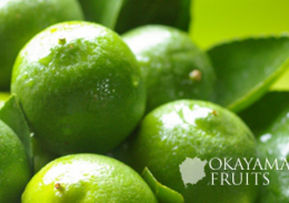
Lemon
(レモン)
Lisbon type lemons actively produced in Ushimado (Setouchi city), known as “the Aegean Sea of Japan,” are becoming more and more popular as their skin can be used together with their meat. Citrus, citrus Sudachi, citrus Kabosu and many more are the flavorful acidic citrus fruits that we can produce in Okayama, a place of mild climate of the Seto Inland Sea. All of them are high in quality.
Season: Middle of October to middle of January
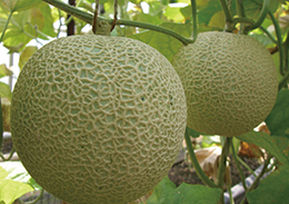
Ashimori Melon
(足守メロン)
Okayama is called a sunny land and has many daylight hours. In addition to these long daylight hours, Ashimori melons are grown in glass greenhouses. Growing only one melon per tree makes the melon meltingly sweet with an elegant flavor. Now, the Ashimori melon is the “Ashimori Brand,” one of the specialties representing Okayama. The melons are sold throughout Japan.
Season: Early April to late September
About Us
Japan is surrounded by rich and beautiful nature, and its agricultural and fishery production techniques and various processing techniques are advanced.
In Japan, the Seto Inland Sea area is endowed with a mild climate with few natural disasters.
Okayama Prefecture is called the “Fruit Kingdom”, and it is home to a variety of world-famous branded fruits.
There is a figure of a producer in Okayama who inherits the techniques that his ancestors created through repeated trial and error and makes serious efforts.
We will continue to conduct export business to provide delicious food around Okayama and the Seto Inland Sea to people around the world.